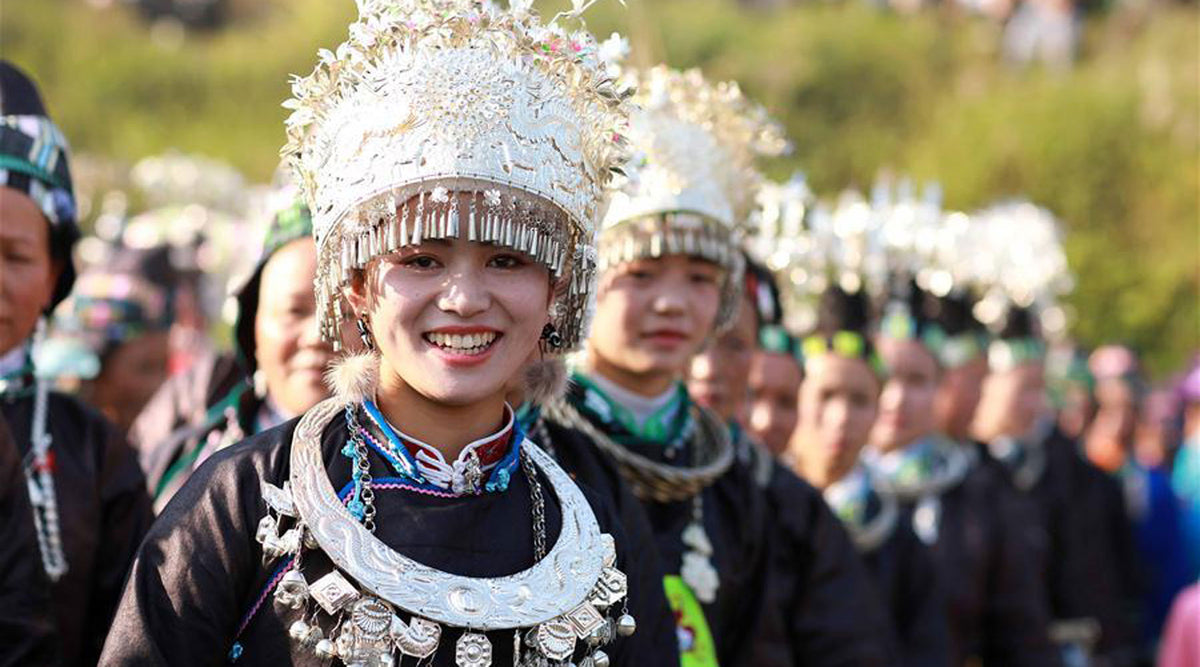
The ancient traditions of the Miao
We’ve recently extended our collection of homewares and jewellery produced by the Miao people of southern China, with wonderful silverware and patterned cushion covers made from vintage Miao fabric now in stock.

The Miao are one of the largest minority ethnic groups in China, numbering over nine million and living mainly in the mountainous Guizhou province of the south-west. They are an extremely diverse group with a long and rich culture, known to have lived in China from as long ago as the Qin and Han dynasties over 2000 years ago and with many sub-groups such as the Long Horn Miao, named after their fabric-decorated horn-shaped headpieces, and the Silver Miao, recognised for their heavy, highly ornate silver jewellery.
The Miao are famous in China and beyond for their skill in producing silver jewellery that is extremely delicate and beautiful. An old saying of the Miao runs that ‘a girl is not a girl without silver’ and families believe that their wealth is measured by the amount of silver their daughter wears on her wedding day, saving up for many years for the ceremony.

As part of our range of accessories at Shimu we stock a wide collection of Miao jewellery, including silver bangles, bracelets and necklaces in traditional designs – ideal as unusual gifts that you won’t find elsewhere. We also offer more elaborate, large silver necklaces and headdresses that are a wonderful example of the skill of the Miao artisans. These work beautifully as costume jewellery for the more daring but, as they are supplied with stands, also make beautiful ornaments.
Jewellery and headdresses like these are also presented as gifts to a prospective bride, used as bargaining tools by a suitor in negotiating a suitable match and convincing his prospective bride’s parents that he is able to provide for their daughter in the future. While they are not luxurious by western standards Miao weddings are very traditional affairs, heavy with ritual but also with warmth and a human touch. The bride will be adorned by the elder women in her family with finely embroidered clothes, silver jewellery and layers of pleated skirts. She will then walk in a procession of dozens of people, accompanied by musicians, to the groom’s house for the ceremony, blessings, and a feast of traditional dishes.

Along with silverware, clothing and fine embroidery is an important part of Miao culture, with the ability of a young woman to produce beautiful needlework considered another valuable asset when it comes to marriage. By the time they are seven years old, girls learn complex embroidery from their older sisters, mothers and aunts, to create sensational, beautifully stitched and highly distinctive garments.
We have recently extended our range of cushion covers produced from traditional Miao fabrics. These cotton and hemp fabrics are taken from the hems and other parts of old dresses and robes from Guizhou, recycled and hand stitched to produce individual, patterned cushions. The traditional colours used are indigo and lighter blues, with highlights stitched in bright pink. Every cushion is individually stitched by Miao women, providing them with an additional income and helping to continue their ancient traditions.

More recently the Miao and other minorities have been encouraged to assimilate into the mainstream of Chinese culture and, with the dramatic changes in society in China over recent decades, there is a danger that the old traditions and culture of the country’s minorities will be lost, particularly as young people move to the cities and are less immersed in the old ways of their forbears. However, appreciation for Miao crafts has grown in recent years and the value of these to China’s blossoming tourist industry is being recognised. It is therefore to be hoped that these remarkable skills will continue to be handed down for future generations.
To learn more about the Miao people, their culture and how they are keeping alive their traditions in modern China, you may like to take a look at ‘Where women can’t marry without silver’ – a fascinating part of the travel section of the BBC website.





Leave a comment